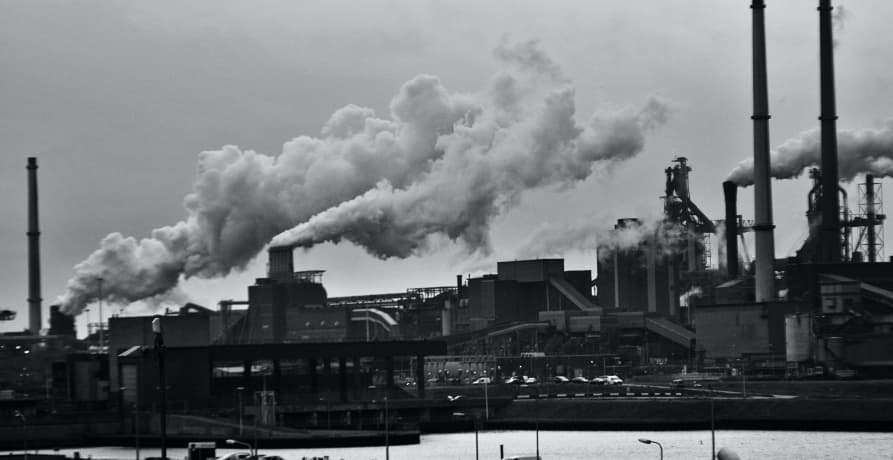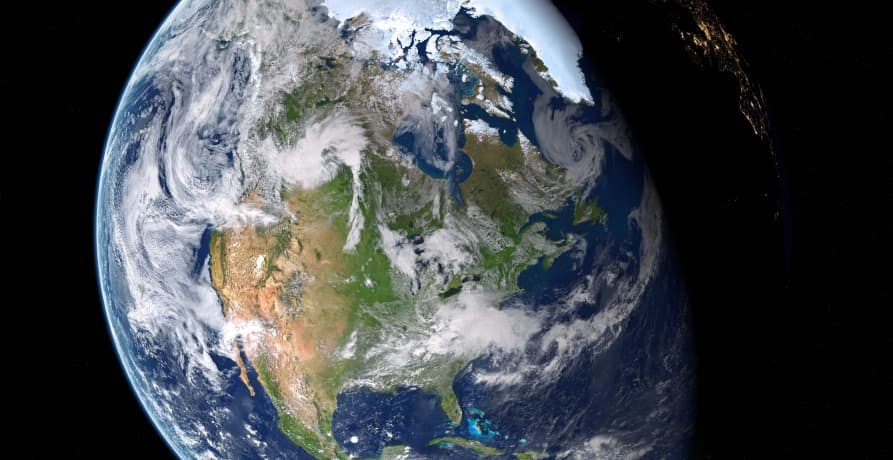ESG / CSR
Industries
Carbon Cycle: Definition, Principles, and Importance



The carbon cycle is a delicate system that regulates the flow of carbon dioxide (CO2) between the Earth’s atmosphere, oceans, and land. For millennia, this natural balance has remained stable, allowing ecosystems to thrive. However, human activity - primarily the burning of fossil fuels and deforestation - has severely disrupted this equilibrium, causing excess carbon dioxide to accumulate in the atmosphere. As a result, global temperatures are rising, extreme weather events are intensifying, and natural carbon sinks are struggling to keep up.
Restoring balance to the carbon cycle is crucial to mitigating climate change. This requires drastic emissions reductions and investment in negative emissions technologies to remove existing carbon from the atmosphere. Without urgent action, the impacts of global warming will continue to accelerate, threatening biodiversity, food security, and human societies worldwide.
👉 What is the carbon cycle? Why is it so important? And how can we restore balance to prevent further global warming?
What is the carbon cycle?
In simple terms, the carbon cycle describes the way that carbon moves around the Earth. It's made up of different carbon-emitting sources, which in turn, are balanced out by carbon sinks that decrease the amount of carbon in the atmosphere.
For example, when animals breathe in oxygen, they then expel carbon dioxide into the atmosphere. This is then balanced out by the Earth's plants and vegetation which absorb carbon dioxide, using it for the process of photosynthesis and releasing oxygen back into the environment. The different systems on Earth naturally balance themselves out - something that is termed ‘dynamic equilibrium'.
However, human activities have drastically increased atmospheric carbon dioxide, disrupting this balance and accelerating climate change.
Why is carbon important?
Carbon also forms part of the chemical compound carbon dioxide - CO2. And while this compound has been vilified in the media in recent years (it's a greenhouse gas and one of the driving forces behind climate change), it's actually one of the most important gases on Earth. Plants depend on it for the creation of their energy and in turn, they provide us with oxygen and food to eat.
It also traps heat close to the Earth, helping our planet to hold onto some of the heat radiated from the sun - without it the Earth would be an uninhabitable ball of ice!
However, as with anything, you can have too much of a good thing - and too much carbon dioxide in the atmosphere is a problem.
What caused carbon levels to rise?
The Industrial Revolution is the name given to the period of history which spans from around 1760 until 1840, when The United Kingdom, Continental Europe, and the United States transitioned from creating goods by hand to using mechanized methods of mass production.
This period of time brought about the advent of four major industries that play a huge part in most economies even to this day: ie. manufacturing, mining, transportation, and retail. The benefits of the Industrial Revolution cannot be underplayed - it led to huge economic growth, more efficient labor, and propelled technological innovation, eventually increasing incomes and improving living standards across the globe.
However, industrialization has also been detrimental to the environment. The Industrial Revolution was fuelled by the burning of fossil fuels - initially coal, and then eventually by petroleum and natural gas. The burning of these fuels meant that over the industrial era, over 2.3 trillion tonnes of carbon dioxide contributed to rising greenhouse gas levels in the Earth's atmosphere. About half of this was absorbed by the Earth's carbon sinks, but the rest contributed to rising carbon dioxide concentrations in the atmosphere, driving global warming.

How are rising levels of carbon affecting our environment?
The threat that global warming presents to mankind (and to the Earth's biodiversity) really cannot be understated. If we continue to release carbon dioxide and other greenhouse gases into the atmosphere we'll create an increasingly inhospitable world that struggles to support life.
As we've already touched on, approximately half of the extra carbon created through human activity is absorbed by the Earth's carbon sinks. Carbon sinks are natural environments that have the ability to absorb carbon dioxide from the atmosphere - the Earth's primary carbon sinks are the oceans, forests, and soil.
Unfortunately, human activity is producing so much excess carbon dioxide that the Earth's carbon sinks are unable to trap all of it.
The threat to carbon sinks
Carbon sinks play a crucial role in maintaining the planet’s delicate carbon balance, but they are under increasing pressure from rising global temperatures and environmental degradation.
- Oceans: Cooler water is capable of absorbing more carbon dioxide, but as global temperatures rise, ocean waters are warming, reducing their ability to store CO2. This leads to more carbon remaining in the atmosphere, accelerating global warming. Additionally, increased CO2 absorption is making oceans more acidic, further threatening marine ecosystems.
- Forests: Trees and plants absorb carbon dioxide through photosynthesis. However, deforestation, land-use changes, and an increase in wildfires - many of which are fueled by climate change - are rapidly reducing their effectiveness. When forests are destroyed, the carbon they store is released back into the atmosphere, worsening the problem.
- Soil: Healthy soil is a major carbon sink, but industrial agriculture, deforestation, and climate change are depleting its ability to store carbon. Rising temperatures dry out the soil and strip it of organic material, reducing its capacity to trap CO2 and causing stored carbon to be released into the atmosphere.
❗️ As carbon sinks weaken, they absorb less carbon dioxide, leaving more of it trapped in the atmosphere. This creates a vicious cycle - global warming is reducing the ability of the planet to regulate carbon naturally, which in turn pushes temperatures even higher. Unless we take urgent action to protect and restore these vital carbon sinks, we risk further destabilizing the carbon cycle and accelerating climate change.

The consequences of a disrupted carbon cycle
With carbon sinks under strain, excess carbon dioxide accumulates in the atmosphere, trapping heat and accelerating climate change. The impacts include:
Extreme weather events
Rising global temperatures are intensifying extreme weather events, including prolonged droughts, devastating floods, stronger storms, and shifts in weather patterns. These changes threaten human life, destroy ecosystems, and disrupt economies worldwide.
Ocean acidification
Beyond rising temperatures, excess carbon dioxide is also altering ocean chemistry. When CO2 dissolves in seawater, it forms carbonic acid, lowering the ocean’s pH. This makes it harder for marine organisms such as corals, shellfish, and plankton to maintain their calcium carbonate structures, endangering entire marine ecosystems and the livelihoods that depend on them.
Melting ice caps and glaciers
Polar ice caps and glaciers are shrinking due to rising temperatures. These ice masses naturally reflect sunlight, helping to regulate global temperatures, but as they melt, darker ocean and land surfaces absorb more solar radiation, further accelerating global warming in a dangerous feedback loop.
Loss of biodiversity
Many species rely on stable temperatures, predictable weather patterns, and balanced ecosystems to survive. As carbon sinks weaken and climate change accelerates, habitats are being destroyed or altered too quickly for many species to adapt. Coral reefs are bleaching, forests are declining, and ecosystems are becoming fragmented, putting countless plants and animals at risk of extinction.
Rising sea levels
As glaciers and ice caps melt, sea levels are rising, threatening coastal cities, small island nations, and low-lying regions. Higher sea levels increase the frequency and severity of coastal flooding, storm surges, and saltwater intrusion into freshwater sources, displacing millions of people and disrupting economies.
Disruptions to agriculture and food security
Changes in temperature and precipitation patterns are making traditional farming practices less viable in many regions. Extreme heat waves, droughts, and changing growing seasons are reducing crop yields and livestock productivity, increasing food scarcity, and driving up global food prices. Meanwhile, soil degradation is making agricultural land less fertile, further worsening the situation.
Health impacts
The changing climate is exacerbating health issues worldwide. Rising temperatures contribute to the spread of vector-borne diseases (such as malaria and dengue fever), increase heat-related illnesses, and worsen air pollution, leading to respiratory and cardiovascular problems. Additionally, extreme weather events can cause injury, displacement, and mental health challenges.
Permafrost thawing and methane release
As Arctic permafrost melts due to rising temperatures, it releases large quantities of stored methane - a potent greenhouse gas that traps heat even more effectively than carbon dioxide. This feedback loop accelerates global warming and further destabilizes the climate.
How can we restore the equilibrium of the world’s carbon cycle?
If we want to stop global warming and mitigate the worsening climate crisis, restoring balance to the world's carbon cycle is absolutely crucial. So how can this be achieved?
Reducing carbon emissions at the source
The primary way to restore balance to the carbon cycle is by significantly cutting greenhouse gas emissions - most importantly, through the elimination of fossil fuel use. When fossil fuels such as petroleum, natural gas, and coal are burned, they release massive amounts of carbon dioxide into the atmosphere. In fact, fossil fuel combustion is responsible for nearly 90% of global carbon emissions. Reducing our dependence on these energy sources - and ultimately phasing them out altogether - is one of the most effective ways to curb carbon pollution.
Thankfully, governments worldwide are beginning to shift away from fossil fuels. Many nations have introduced renewable energy targets, carbon pricing mechanisms, and green investment policies to accelerate the transition to cleaner energy.
Key initiatives to reduce carbon emissions:
| Key Strategies for Restoring Carbon Cycle Balance | How They Help |
|---|---|
| Phasing out fossil fuels | Reduces the largest source of carbon emissions |
| Expanding renewable energy | Provides low-carbon alternatives such as wind, solar, and hydro |
| Carbon pricing & regulations | Encourages industries to lower emissions through financial incentives or penalties |
| Protecting & restoring carbon sinks | Strengthens natural carbon storage in forests, oceans, and soils |
| Sustainable agriculture & land use | Improves soil carbon storage and reduces deforestation |
| Investing in carbon removal technologies | Enhances carbon capture through direct air capture and biochar |
The role of governments and policy
Government action plays a crucial role in balancing the carbon cycle, but approaches vary significantly.
UK: Expanding clean energy
The UK has strengthened its commitment to decarbonization through key initiatives:
- Clean Power Plan: Aims for a fully clean electricity system by 2030.
- Energy infrastructure policy: Updated guidelines to accelerate renewable energy expansion.
- Great British Energy (GBE): A state-owned body investing in renewables, targeting 8 GW by 2030.
These policies position the UK as a leader in clean energy transition.
US: Policy reversal under Trump
In contrast, the US has reversed many climate policies following Donald Trump’s inauguration in January 2025. His administration:
- Declared a national energy emergency, prioritizing fossil fuel production.
- Repealed clean energy initiatives, halting wind projects and scaling back EV support.
- Withdrew from the Paris Agreement, weakening international climate commitments.
This shift threatens to accelerate emissions and hinder global decarbonization efforts.
More action is needed
While some governments are advancing clean energy, efforts remain too slow. The window to restore balance to the carbon cycle is closing, and without bolder commitments and faster action, global warming will spiral out of control.
Urgent steps - such as stricter emissions regulations, greater investment in clean technology, and large-scale carbon removal efforts - are critical. However, policy reversals, such as Trump’s rollback of climate policies in the US, risk undoing progress and accelerating emissions. To avoid further setbacks, governments must act decisively to phase out fossil fuels, protect carbon sinks, and drive decarbonization - before it’s too late.
Carbon levels will still be too high
Even if we manage to completely eliminate the use of fossil fuels, this won't actually reduce the carbon dioxide released into the atmosphere over the past decades - it will just stop the level of carbon from continuing to grow. If we want to restore the carbon cycle to the level of carbon that was seen before the industrial revolution we need to create new carbon sinks or amplify the capacity of existing carbon sinks. This is what's known as negative emission schemes.
Amplifying existing carbon sinks
Amplifying the capacity of existing carbon sinks can be achieved by: restoring forests that have been degraded or destroyed, through practices such as sustainable forestry and the planting of trees; improving agricultural practices in a way that maximizes the organic carbon storage capacity of the soil; improving ecosystems and plant life through revegetation and the protection of areas of environmental significance. These are all key strategies for offsetting how much carbon dioxide is lingering in the atmosphere.
Create new carbon sinks
In addition to protecting natural carbon sinks, artificial carbon sinks offer a way to remove carbon dioxide from the atmosphere and help restore balance to the carbon cycle. This is done through carbon capture, utilization, and storage (CCUS) - a set of technologies that either remove CO2 from the air or capture it directly at emission sources, storing it underground or repurposing it for industrial use.
However, while CCUS plays a role in mitigating emissions, it is not a silver bullet. Some argue that large-scale carbon removal could justify continued fossil fuel use, but this is a dangerous assumption. CCUS has technical, economic, and scalability limitations, meaning it is currently incapable of removing CO₂ at the levels required to balance the carbon cycle. Additionally, the process is energy-intensive, expensive, and still in its early stages, with many projects failing to deliver on promised reductions.
Most importantly, CCUS does not address the broader environmental damage caused by fossil fuel extraction and combustion - including air and water pollution, habitat destruction, and methane emissions. Relying too heavily on these technologies risks delaying necessary action on phasing out fossil fuels altogether. Instead, CCUS should be seen as a complementary measure, rather than a substitute for emissions reduction at the source.
What about Greenly?
At Greenly, we help businesses measure, manage, and reduce their carbon footprint. Our platform provides services such as carbon accounting and actionable insights to support sustainability goals. Here’s how Greenly can assist your company:
- Carbon footprint assessment: We analyze your emissions across Scope 1, 2, and 3 to provide a detailed carbon inventory.
- Decarbonization strategies: Our tailored action plans help businesses implement effective emissions reduction measures.
- Regulatory compliance: Stay ahead of climate regulations with our support in carbon reporting and sustainability disclosures.
- Supply chain management: We help businesses assess their supply chain emissions, promoting more sustainable sourcing.
- Carbon offsetting guidance: We identify credible offset projects to help companies mitigate unavoidable emissions.
By leveraging Greenly’s expertise, businesses can transition to a low-carbon economy while enhancing their sustainability credentials.
Get in touch today to learn how we can support your carbon reduction journey!







